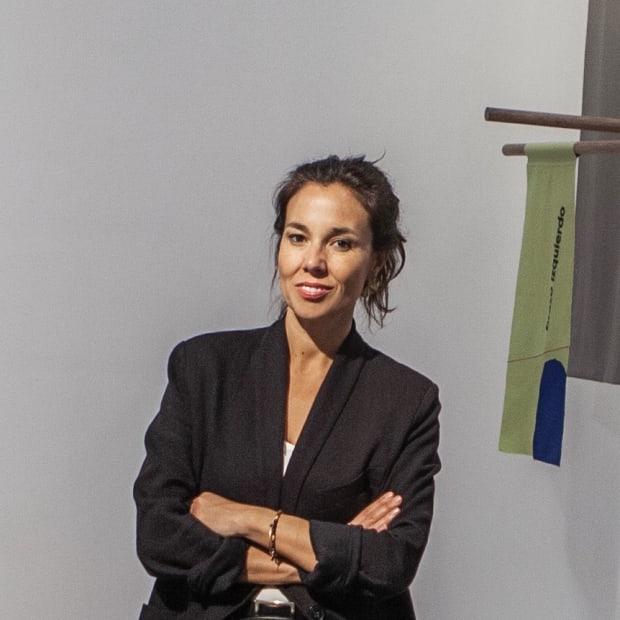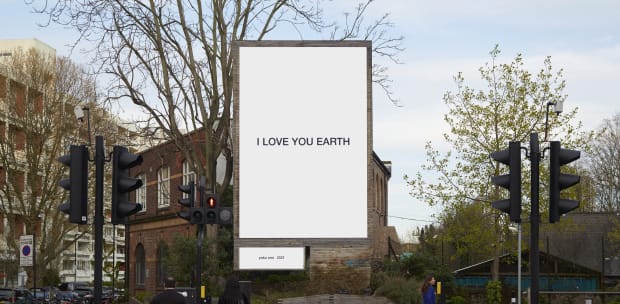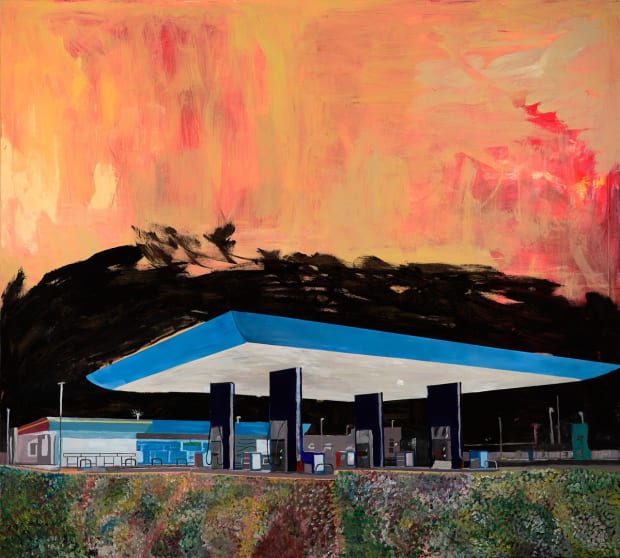-

-

© Claudia Comte, Underwater Cacti (2019), TBA21 Thyssen-Bornemisza Art Contemporary. Photo by F-stop Movies.
-

© Yoko Ono, I LOVE YOU EARTH, 2021. -
 © Leandro Erlich, Order of Importance (2019), commissioned by Miami Beach City, US, 2019. ©Leandro Erlich StudioOn The Art x Sustainability Axis
© Leandro Erlich, Order of Importance (2019), commissioned by Miami Beach City, US, 2019. ©Leandro Erlich StudioOn The Art x Sustainability AxisNicky: We’re all becoming acutely aware that our planet’s ecosystems are close to breaking point. We are facing the increasing effects of global warming, biodiversity loss, scarcity of earth’s natural resources and an excess of landfill waste which is harmful to our planet. One bit of data that always impacts me is Earth Overshoot Day, which is the day the planet’s biocapacity (the amount of ecological resources Earth is able to generate that year) is exceeded by humanity’s Ecological Footprint (humanity’s demand for that year). This year the global earth overshoot day was 2 August 2023. This means that from 3 August until 31 December we were operating on an “ecological deficit”. This is why this work is important and urgent for us all.
Nicky: Whilst the impact of the arts sector is much less than other industries it still has a significant impact. A report by the UK non-profit Julie’s Bicycle stated that the global arts sector has an annual impact of 70 million tonnes of CO2e. Therefore the arts need to align with the global sustainability agenda and carry out best practices to reduce its environmental impact. Also, future legislation, compliance standards and funding requirements will eventually require that this work is embedded in the culture sector. So the sooner the better.
Nicky: The most powerful opportunity presented to the arts and culture sector is how they can help lead the transition to a sustainable future by acting as an agent for change in society, through innovation, discourse, narratives and ultimately by leading by example by implementing and reporting its sustainability work.
Nicky: We also have to keep in mind that the key mission of the culture sector is to promote artistic creation and safeguard and protect our culture for the generations to come. If we don’t have a safe and healthy planet to live in 100 years, this will be a very difficult task. There are also the risks of the impact of climate change on our cultural heritage sites.
Nicky: Here, in the Gulf, UreCulture delivered a sustainability assessment and Environmental, Social and Governance (ESG) strategy for the Louvre Abu Dhabi working with France Museums. We are also working with Manal Al Dowayan through our regenerative sustainability roadmap for one of her land art projects, and of course, we are working with Emirati artist Hashel Al Lamki.
Nicky: In Spain, we just completed the 2019 carbon footprint for TBA21 Thyssen-Bornemisza Art Contemporary across its entire organisation and global programme. I’m also a founding committee member of Gallery Climate Coalition Spain where we are supporting the Spanish art sector to be more environmentally sustainable. Another great project I worked on was with the artist Alvaro Laiz for his exhibition at the Museo Universidad de Navarra where we worked on circular design innovation, the exhibition footprint and sustainability storytelling through the website we created for this project Beyond the Edge. This project was funded by the National Geographic Society as Alvaro is a National Geographic Fellow.
Nicky: The positive impact is that these institutions and artists are leading the way in what is still a relatively new (and at times challenging) field of work in our sector. They are acting as the trailblazers of the future that is to come, hopefully inspiring others in the arts and culture ecosystem to follow. In turn, the general public looks up to artists and cultural institutions and thus this can have a further systemic impact on society.
-
 Hashel Al Lamki, ADNOC Gas Station (2019). Acrylic on canvas. (2019). Image courtesy of Warehouse421 and the artist
Hashel Al Lamki, ADNOC Gas Station (2019). Acrylic on canvas. (2019). Image courtesy of Warehouse421 and the artist -






